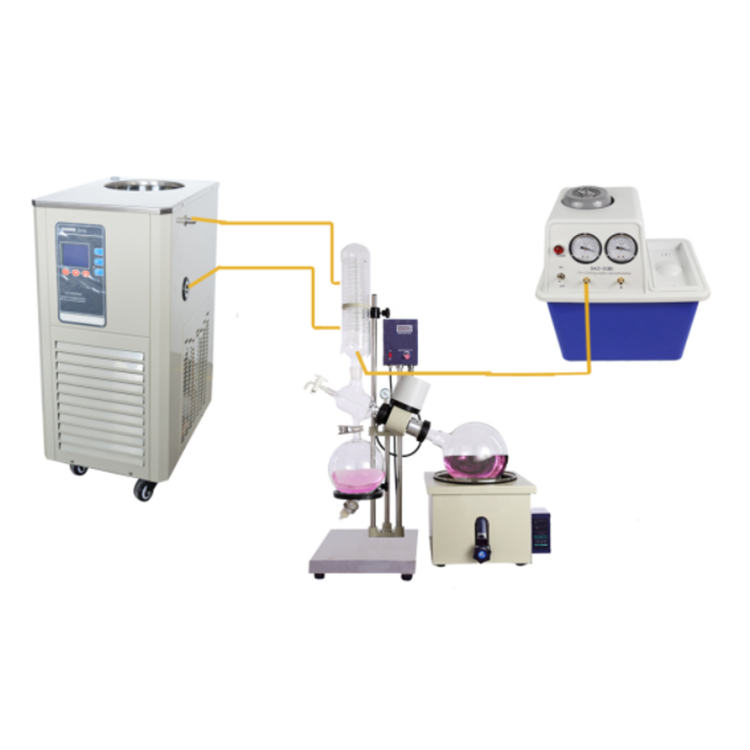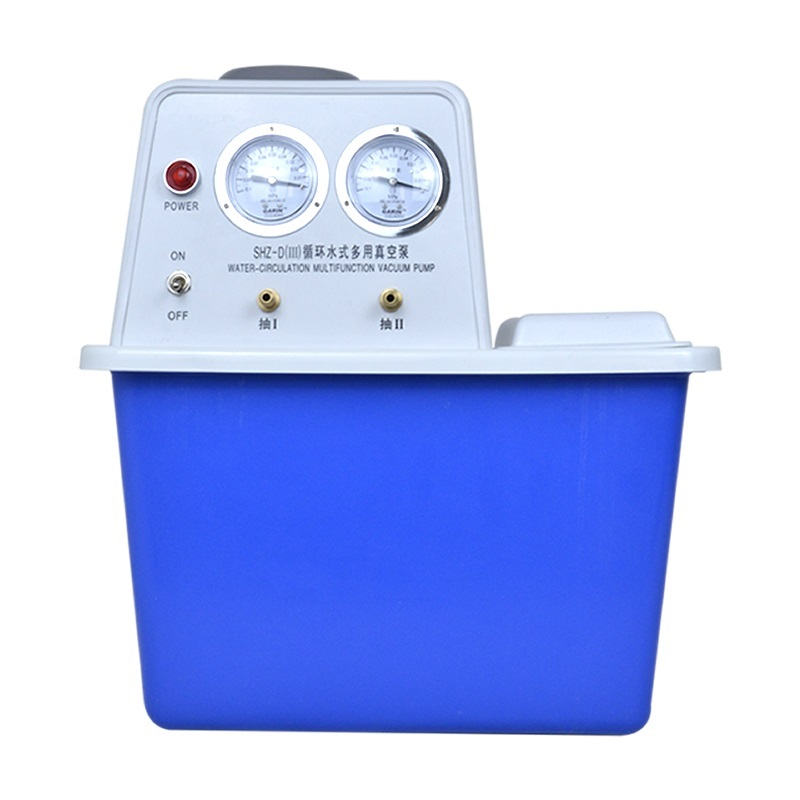What is a vacuum pump?
A vacuum pump can be defined as a device to remove air or gas molecular from a sealed container in order to create a vacuum. It plays an essential role in many fields, such as pharmaceutical and chemical industries, food packaging, vacuum drying and other fields. A vacuum pump is always used in the beginning of a process result from that a vacuum condition is usually necessary for the whole process and prepares for next operations.
What is a Circulating Water Vacuum Pump?
The circulating water vacuum pump, also known as water circulating vacuum pump and water ring vacuum pump, is a device to remove air or gas molecular from a sealed container by taking water as its working medium. It can not only provide vacuum condition for chemical labs, but offer circulating cooling water for reaction devices. Sometimes it can even serve as a compressor.
What is a Circulating Water Vacuum Pump Used for?
Initially, a water circulating vacuum pump is used as a water suction pump. But gradually it is applied in a great variety of industries, such as petroleum, chemical engineering, mechanical engineering, mining industry, light industry, medicine and food. As a multi-purpose vacuum pump, a water circulating vacuum pump is extensively used to provide vacuum condition for evaporation, distillation, crystallization, filtration, pressure reduction, sublimation and other operations.
Advantages of Circulating Water Vacuum Pump
Multi functions. A water circulating vacuum pump can not only provide a vacuum condition but can do external circulation to provide recirculated cooling water for reaction devices. Directly connected to the tap water, it maintains constant vacuum, water temperature and water quality under the condition of continuous operation by supplying water appropriately. It can lower the vacuum degree as well as provide recirculated cooling water.
Effectively save water. The water added into the water tank can be recycled for use by adopting the water circulating operation, which avoid the water waste phenomenon. It is especially suitable for laboratories that are lack of water or water pressure.
The machine body adopts double taps and can be used separately or in parallel with two vacuum gauges. The main engine is made of the stainless steel movement and anti-corrosion movement. It is corrosion resistant, non-polluting, low noise and easy to move. The vacuum valve can be installed according to users’ need. Four students are allowed to do chemical experiments at the same time so that the experimental space can be reduced.
circulating water vacuum pump Working Process
The pump body is filled with an appropriate amount of water as a working fluid. When the impeller rotates clockwise according to the figure, the water is thrown around by the impeller. Due to the centrifugal force, the water forms a closed ring of approximately equal thickness depending on the shape of the pump chamber. The inner surface of the lower portion of the water ring is just tangent to the impeller hub, and the upper inner surface of the water ring is just at the tip of the blade (actually the blade has a defined insertion depth in the water ring). At this time, a crescent space is formed between the impeller hub and the water ring, and this space is divided by the impeller into a plurality of small cavities equal to the number of blades. If the lower part of the impeller is used as the starting point, then the impeller is 180 degrees before the rotation, the small cavity area is increased from small to large, and communicates with the suction port on the end face. At this time, the gas is sucked, and when the inhalation is finished, the small cavity is Isolated from the suction port; when the impeller continues to rotate, the small cavity becomes larger and smaller, so that the gas is compressed; when the small cavity communicates with the exhaust port, the gas is discharged outside the pump.

